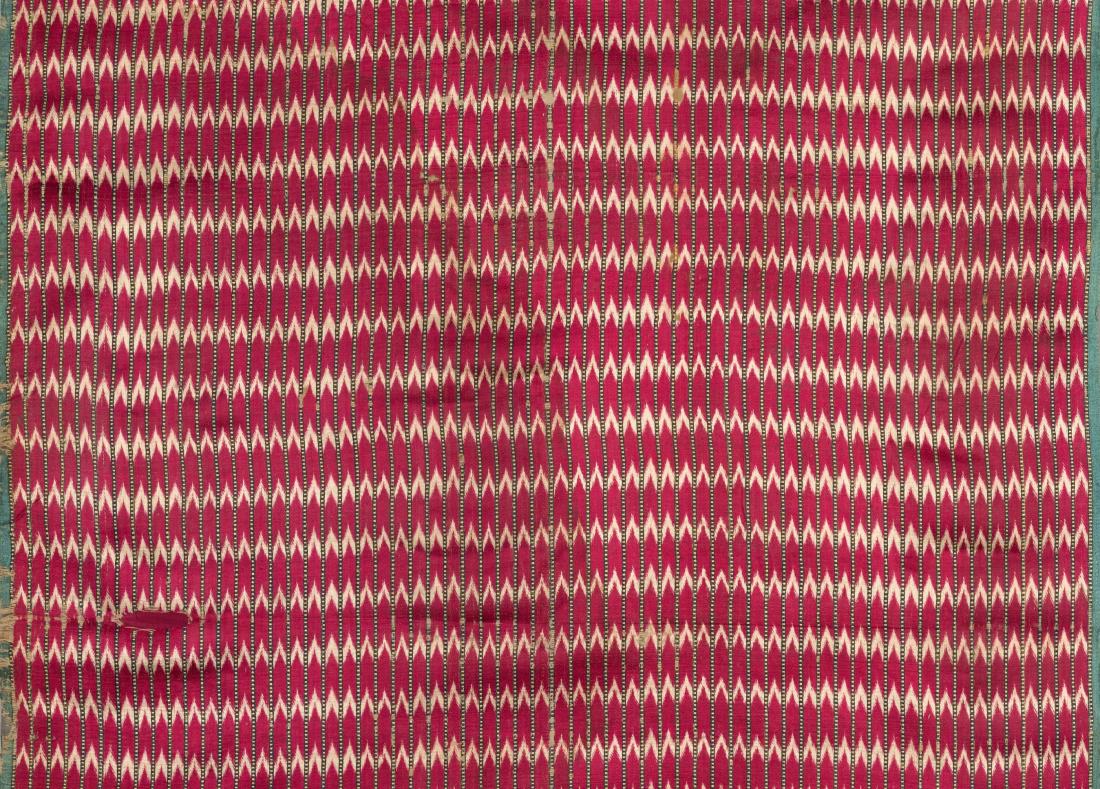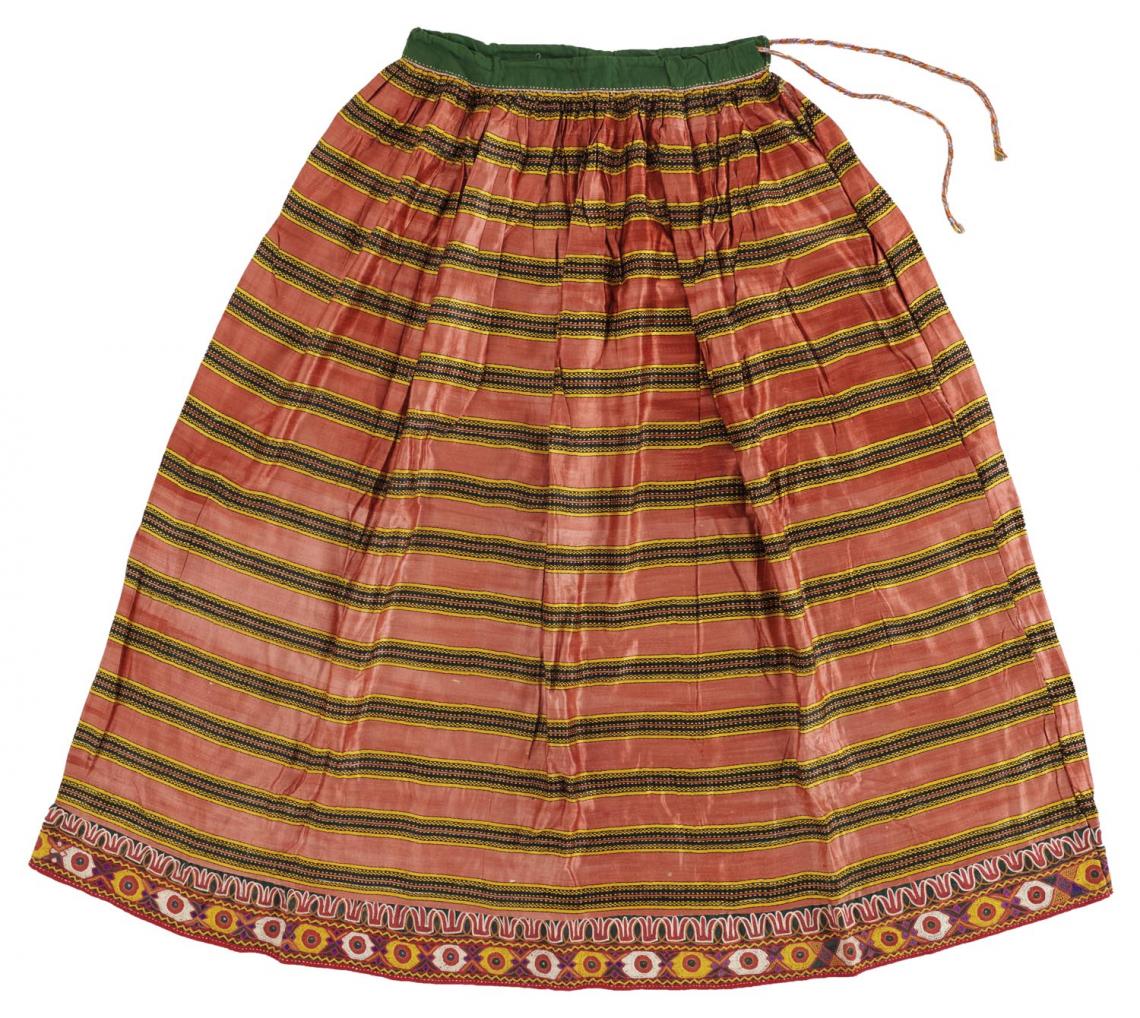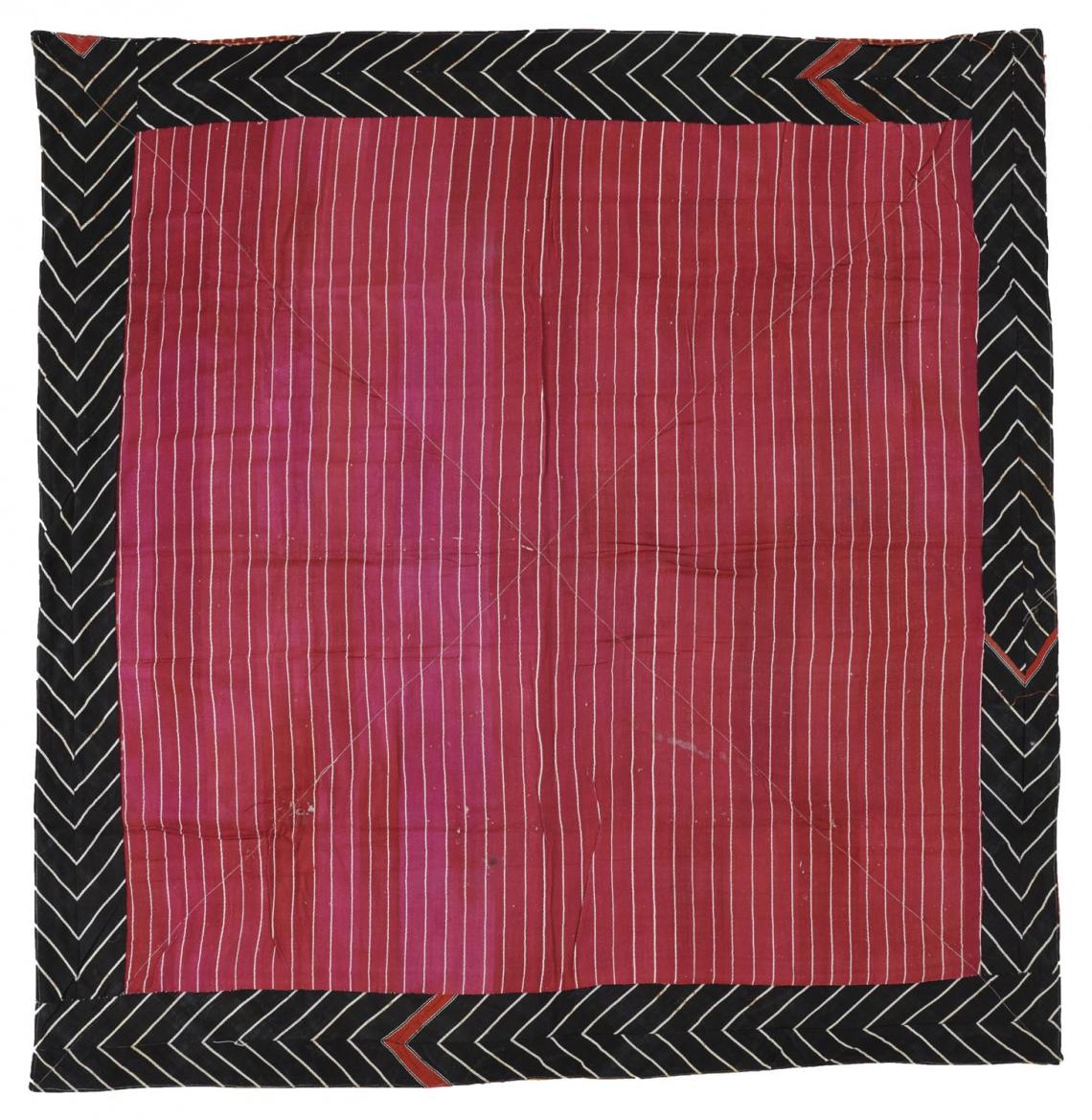Mashru Fragment, Surat, India, c. Late 19th–early 20th century, Warp ikat, Satin and complementary warp weave, silk and cotton, 71.1 x 61.9 cm.
A lustrous cotton and silk fabric that likely originated in the Kutch and Patan regions of present-day Gujarat, mashru derives its name from the Arabic word for ‘permitted’ or ‘lawful’. Dating at least as far back as the sixteenth century, the fabric was originally made so that Muslim men could circumvent the prohibition against wearing pure silk under the Hadith in Islamic law.
Mashru is distinguished by its floating warp satin weave, in which each silk warp thread goes over six cotton weft threads, thus largely keeping the silk away from the skin when a mashru garment is worn. After the cloth is woven, it is soaked in clear water and hammered with wooden implements to give the material its characteristic sheen. Traditionally, the cloth is striped or patterned using the bandhani and ikat techniques with natural dyes, with a historical preference in Gujarat with a red, yellow and black pattern.
Embroidered Mashru Skirt, Gujarat, India, c. 20th century, Silk, cotton, mirrors, 80 x 97 cm.
Mention of a related Persian fabric, susi, in the sixteenth-century Mughal text Ain-i-Akbari, suggests that mashru too may have existed in India around the same time. While most scholars believe that mashru was a purely South Asian invention, others suggest that it may have originated much earlier in the cloth and embroidery workshops or tiraz khanas of West Asia. Mashru fabrics, along with other mixed fabrics that use silk, such as alacha and tapseel, gained popularity among Muslim communities not only in India, but also in the medieval Islamic world across West Asia and North Africa. These fabrics are often referred to interchangeably in historical records, making it difficult to accurately trace the origin and spread of any one of them, and often contributing to ambiguity around the scale of historical production in areas where these fabrics were traded, such as the ports of Gujarat.
Traditionally used to make clothes for dowry among Kutchi communities, Mashru is used as a base cloth for Rabari appliqué and embroidery work and in khanjari work done by the Meghwal community in Rajasthan. While it is most commonly stitched into garments such as blouses and ghagras (skirts) for women and both upper and lower garments for men, mashru is also frequently used as a lining fabric in cloth bags and furnishing textiles such as pillow cases. In northern and eastern India, mashru was less popular for making garments than in the west and the south, and was often woven using a set of four weft threads rather than the usual six. Centres of production included Varanasi and Murshidabad, in present day Uttar Pradesh and West Bengal respectively, with the former largely producing the locally popular gulbadan cotton and silk fabric, which has a plain weave.
Mashru Fragment, Surat, India, c. Late 19th–early 20th century, Warp ikat, Satin and complementary warp weave, silk and cotton, 71.1 x 61.9 cm.
The fabric, particularly with the ikat pattern, appears to have been popular in the Deccan Sultanates from the seventeenth century onwards, with the earliest known visual evidence being a portrait of Sultan Adil Shah of Bijapur made in 1635, showing the king wearing a mashru ikat jama. The Deccan Sultanates had a strong mercantile and cultural connection with West Asia. Scholars have speculated that Hyderabad, a known centre for mashru production in the south, may originally have received the fabric through Turkish and Persian sources — rather than from Gujarat — in the sixteenth century, before it spread to the rest of the Deccan. By the nineteenth century, the weaving centres of the south shifted to present-day Tamil Nadu, with Thanjavur, Tiruchirappalli and Arcot attracting migrant weavers from Gujarat and producing both authentic as well as imitation mashru, the latter featuring ikat patterns but a plain weave.
Large-scale commercial manufacturers now use rayon as an inexpensive and mass-produced alternative to silk in mashru production. Today, the only remaining centres for traditional mashru weaving are Patan and Mandvi, Kutch. Historical examples of mashru cloth can be found at the City Palace Museum in Jaipur and the V&A Museum in London.
This article first appeared in the MAP Academy Encyclopedia of Art.
The MAP Academy is a non-profit online platform consisting of an Encyclopedia of Art, Courses and Stories, that encourages knowledge building and engagement with the visual arts and histories of South Asia. Our team of researchers, editors, writers and creatives are united by a shared goal of creating more equitable resources for the study of art histories from the region.





